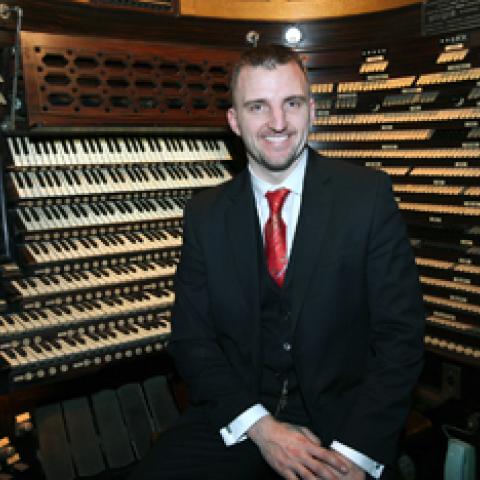Steven Ball, University Carillonneur and Assistant Professor of
Carillon and Campanology at the University of Michigan as well as
Senior Staff Organist of the Michigan Theater in Ann Arbor, has
accepted an appointment as Cathedral Organist at Blessed Sacrament
Cathedral (R.C.) in Detroit, Michigan.
In addition to his travels as a concert organist, carillonneur and
campanologist, he is widely known for his work on the interpretation
and scholarship of silent films and the theater organ. He received
his DMusA in 2008 from the U of M under Marilyn Mason, is a former
student of both the Dutch and Flemish Carillon Schools as well as U of
M under Margo Halsted, and was granted a Fulbright Scholarship in
2001-2002 for the study of Carillon and Campanology in the
Netherlands. Dr. Ball was received into the Guild of Carillonneurs of
North America as a member with "Carillonneur" status in 1998 and has
also undertaken or consulted on a large number of technical projects.
Established in 1905 to serve Catholics on the Northern outskirts of
the City of Detroit, construction of the current Norman Gothic church
structure designed by Henry A. Walsh of Cleveland, Ohio commenced
in1913 and continued until the completion of the twin towers of the
West facade in 1951. It was designated the Cathedral church in 1938
after the city had experienced an explosive period of growth. A
substantial 19 month, $15 million dollar renovation occoured in 2003
and the Cathedral now houses two significant instruments: Casavant
Frères Ltée Opus of 1925 (3/51) in the West gallery, and Austin
Organ's Opus 2785 (2/31) in the East apse. Mrs. Nancy J Deacon is the
current Director of Music.
More information can be found by visiting:
www.StevenBall.com .
Steven Ball appointed Cathedral Organist at Blessed Sacrament Cathedral, Detroit
Steven Ball



